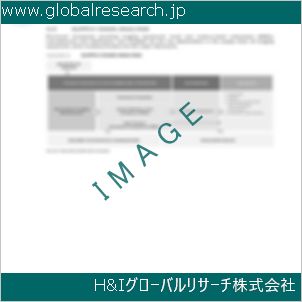1 Bi-component Low Melt Fiber Market Overview
1.1 Product Definition
1.2 Bi-component Low Melt Fiber Segment by Type
1.2.1 Global Bi-component Low Melt Fiber Market Value Growth Rate Analysis by Type 2022 VS 2029
1.2.2 Melting Point Below 130 ℃
1.2.3 Melting Point Above 130 ℃
1.3 Bi-component Low Melt Fiber Segment by Application
1.3.1 Global Bi-component Low Melt Fiber Market Value Growth Rate Analysis by Application: 2022 VS 2029
1.3.2 Automotive
1.3.3 Textile
1.3.4 Construction
1.3.5 Others
1.4 Global Market Growth Prospects
1.4.1 Global Bi-component Low Melt Fiber Production Value Estimates and Forecasts (2018-2029)
1.4.2 Global Bi-component Low Melt Fiber Production Capacity Estimates and Forecasts (2018-2029)
1.4.3 Global Bi-component Low Melt Fiber Production Estimates and Forecasts (2018-2029)
1.4.4 Global Bi-component Low Melt Fiber Market Average Price Estimates and Forecasts (2018-2029)
1.5 Assumptions and Limitations
2 Market Competition by Manufacturers
2.1 Global Bi-component Low Melt Fiber Production Market Share by Manufacturers (2018-2023)
2.2 Global Bi-component Low Melt Fiber Production Value Market Share by Manufacturers (2018-2023)
2.3 Global Key Players of Bi-component Low Melt Fiber, Industry Ranking, 2021 VS 2022 VS 2023
2.4 Global Bi-component Low Melt Fiber Market Share by Company Type (Tier 1, Tier 2 and Tier 3)
2.5 Global Bi-component Low Melt Fiber Average Price by Manufacturers (2018-2023)
2.6 Global Key Manufacturers of Bi-component Low Melt Fiber, Manufacturing Base Distribution and Headquarters
2.7 Global Key Manufacturers of Bi-component Low Melt Fiber, Product Offered and Application
2.8 Global Key Manufacturers of Bi-component Low Melt Fiber, Date of Enter into This Industry
2.9 Bi-component Low Melt Fiber Market Competitive Situation and Trends
2.9.1 Bi-component Low Melt Fiber Market Concentration Rate
2.9.2 Global 5 and 10 Largest Bi-component Low Melt Fiber Players Market Share by Revenue
2.10 Mergers & Acquisitions, Expansion
3 Bi-component Low Melt Fiber Production by Region
3.1 Global Bi-component Low Melt Fiber Production Value Estimates and Forecasts by Region: 2018 VS 2022 VS 2029
3.2 Global Bi-component Low Melt Fiber Production Value by Region (2018-2029)
3.2.1 Global Bi-component Low Melt Fiber Production Value Market Share by Region (2018-2023)
3.2.2 Global Forecasted Production Value of Bi-component Low Melt Fiber by Region (2024-2029)
3.3 Global Bi-component Low Melt Fiber Production Estimates and Forecasts by Region: 2018 VS 2022 VS 2029
3.4 Global Bi-component Low Melt Fiber Production by Region (2018-2029)
3.4.1 Global Bi-component Low Melt Fiber Production Market Share by Region (2018-2023)
3.4.2 Global Forecasted Production of Bi-component Low Melt Fiber by Region (2024-2029)
3.5 Global Bi-component Low Melt Fiber Market Price Analysis by Region (2018-2023)
3.6 Global Bi-component Low Melt Fiber Production and Value, Year-over-Year Growth
3.6.1 North America Bi-component Low Melt Fiber Production Value Estimates and Forecasts (2018-2029)
3.6.2 Europe Bi-component Low Melt Fiber Production Value Estimates and Forecasts (2018-2029)
3.6.3 China Bi-component Low Melt Fiber Production Value Estimates and Forecasts (2018-2029)
3.6.4 Japan Bi-component Low Melt Fiber Production Value Estimates and Forecasts (2018-2029)
4 Bi-component Low Melt Fiber Consumption by Region
4.1 Global Bi-component Low Melt Fiber Consumption Estimates and Forecasts by Region: 2018 VS 2022 VS 2029
4.2 Global Bi-component Low Melt Fiber Consumption by Region (2018-2029)
4.2.1 Global Bi-component Low Melt Fiber Consumption by Region (2018-2023)
4.2.2 Global Bi-component Low Melt Fiber Forecasted Consumption by Region (2024-2029)
4.3 North America
4.3.1 North America Bi-component Low Melt Fiber Consumption Growth Rate by Country: 2018 VS 2022 VS 2029
4.3.2 North America Bi-component Low Melt Fiber Consumption by Country (2018-2029)
4.3.3 United States
4.3.4 Canada
4.4 Europe
4.4.1 Europe Bi-component Low Melt Fiber Consumption Growth Rate by Country: 2018 VS 2022 VS 2029
4.4.2 Europe Bi-component Low Melt Fiber Consumption by Country (2018-2029)
4.4.3 Germany
4.4.4 France
4.4.5 U.K.
4.4.6 Italy
4.4.7 Russia
4.5 Asia Pacific
4.5.1 Asia Pacific Bi-component Low Melt Fiber Consumption Growth Rate by Region: 2018 VS 2022 VS 2029
4.5.2 Asia Pacific Bi-component Low Melt Fiber Consumption by Region (2018-2029)
4.5.3 China
4.5.4 Japan
4.5.5 South Korea
4.5.6 China Taiwan
4.5.7 Southeast Asia
4.5.8 India
4.6 Latin America, Middle East & Africa
4.6.1 Latin America, Middle East & Africa Bi-component Low Melt Fiber Consumption Growth Rate by Country: 2018 VS 2022 VS 2029
4.6.2 Latin America, Middle East & Africa Bi-component Low Melt Fiber Consumption by Country (2018-2029)
4.6.3 Mexico
4.6.4 Brazil
4.6.5 Turkey
5 Segment by Type
5.1 Global Bi-component Low Melt Fiber Production by Type (2018-2029)
5.1.1 Global Bi-component Low Melt Fiber Production by Type (2018-2023)
5.1.2 Global Bi-component Low Melt Fiber Production by Type (2024-2029)
5.1.3 Global Bi-component Low Melt Fiber Production Market Share by Type (2018-2029)
5.2 Global Bi-component Low Melt Fiber Production Value by Type (2018-2029)
5.2.1 Global Bi-component Low Melt Fiber Production Value by Type (2018-2023)
5.2.2 Global Bi-component Low Melt Fiber Production Value by Type (2024-2029)
5.2.3 Global Bi-component Low Melt Fiber Production Value Market Share by Type (2018-2029)
5.3 Global Bi-component Low Melt Fiber Price by Type (2018-2029)
6 Segment by Application
6.1 Global Bi-component Low Melt Fiber Production by Application (2018-2029)
6.1.1 Global Bi-component Low Melt Fiber Production by Application (2018-2023)
6.1.2 Global Bi-component Low Melt Fiber Production by Application (2024-2029)
6.1.3 Global Bi-component Low Melt Fiber Production Market Share by Application (2018-2029)
6.2 Global Bi-component Low Melt Fiber Production Value by Application (2018-2029)
6.2.1 Global Bi-component Low Melt Fiber Production Value by Application (2018-2023)
6.2.2 Global Bi-component Low Melt Fiber Production Value by Application (2024-2029)
6.2.3 Global Bi-component Low Melt Fiber Production Value Market Share by Application (2018-2029)
6.3 Global Bi-component Low Melt Fiber Price by Application (2018-2029)
7 Key Companies Profiled
7.1 Huvis
7.1.1 Huvis Bi-component Low Melt Fiber Corporation Information
7.1.2 Huvis Bi-component Low Melt Fiber Product Portfolio
7.1.3 Huvis Bi-component Low Melt Fiber Production, Value, Price and Gross Margin (2018-2023)
7.1.4 Huvis Main Business and Markets Served
7.1.5 Huvis Recent Developments/Updates
7.2 Toray Chemical Korea
7.2.1 Toray Chemical Korea Bi-component Low Melt Fiber Corporation Information
7.2.2 Toray Chemical Korea Bi-component Low Melt Fiber Product Portfolio
7.2.3 Toray Chemical Korea Bi-component Low Melt Fiber Production, Value, Price and Gross Margin (2018-2023)
7.2.4 Toray Chemical Korea Main Business and Markets Served
7.2.5 Toray Chemical Korea Recent Developments/Updates
7.3 FETL
7.3.1 FETL Bi-component Low Melt Fiber Corporation Information
7.3.2 FETL Bi-component Low Melt Fiber Product Portfolio
7.3.3 FETL Bi-component Low Melt Fiber Production, Value, Price and Gross Margin (2018-2023)
7.3.4 FETL Main Business and Markets Served
7.3.5 FETL Recent Developments/Updates
7.4 Nan Ya Plastics
7.4.1 Nan Ya Plastics Bi-component Low Melt Fiber Corporation Information
7.4.2 Nan Ya Plastics Bi-component Low Melt Fiber Product Portfolio
7.4.3 Nan Ya Plastics Bi-component Low Melt Fiber Production, Value, Price and Gross Margin (2018-2023)
7.4.4 Nan Ya Plastics Main Business and Markets Served
7.4.5 Nan Ya Plastics Recent Developments/Updates
7.5 XiangLu Chemical Fibers Limited Liability Company
7.5.1 XiangLu Chemical Fibers Limited Liability Company Bi-component Low Melt Fiber Corporation Information
7.5.2 XiangLu Chemical Fibers Limited Liability Company Bi-component Low Melt Fiber Product Portfolio
7.5.3 XiangLu Chemical Fibers Limited Liability Company Bi-component Low Melt Fiber Production, Value, Price and Gross Margin (2018-2023)
7.5.4 XiangLu Chemical Fibers Limited Liability Company Main Business and Markets Served
7.5.5 XiangLu Chemical Fibers Limited Liability Company Recent Developments/Updates
7.6 Tinfulong Winning Chemical Fiber
7.6.1 Tinfulong Winning Chemical Fiber Bi-component Low Melt Fiber Corporation Information
7.6.2 Tinfulong Winning Chemical Fiber Bi-component Low Melt Fiber Product Portfolio
7.6.3 Tinfulong Winning Chemical Fiber Bi-component Low Melt Fiber Production, Value, Price and Gross Margin (2018-2023)
7.6.4 Tinfulong Winning Chemical Fiber Main Business and Markets Served
7.6.5 Tinfulong Winning Chemical Fiber Recent Developments/Updates
7.7 DAFA FIBER
7.7.1 DAFA FIBER Bi-component Low Melt Fiber Corporation Information
7.7.2 DAFA FIBER Bi-component Low Melt Fiber Product Portfolio
7.7.3 DAFA FIBER Bi-component Low Melt Fiber Production, Value, Price and Gross Margin (2018-2023)
7.7.4 DAFA FIBER Main Business and Markets Served
7.7.5 DAFA FIBER Recent Developments/Updates
7.8 Taekwang
7.8.1 Taekwang Bi-component Low Melt Fiber Corporation Information
7.8.2 Taekwang Bi-component Low Melt Fiber Product Portfolio
7.8.3 Taekwang Bi-component Low Melt Fiber Production, Value, Price and Gross Margin (2018-2023)
7.8.4 Taekwang Main Business and Markets Served
7.7.5 Taekwang Recent Developments/Updates
7.9 IFG Exelto NV
7.9.1 IFG Exelto NV Bi-component Low Melt Fiber Corporation Information
7.9.2 IFG Exelto NV Bi-component Low Melt Fiber Product Portfolio
7.9.3 IFG Exelto NV Bi-component Low Melt Fiber Production, Value, Price and Gross Margin (2018-2023)
7.9.4 IFG Exelto NV Main Business and Markets Served
7.9.5 IFG Exelto NV Recent Developments/Updates
7.10 Hickory Springs
7.10.1 Hickory Springs Bi-component Low Melt Fiber Corporation Information
7.10.2 Hickory Springs Bi-component Low Melt Fiber Product Portfolio
7.10.3 Hickory Springs Bi-component Low Melt Fiber Production, Value, Price and Gross Margin (2018-2023)
7.10.4 Hickory Springs Main Business and Markets Served
7.10.5 Hickory Springs Recent Developments/Updates
7.11 Dividan
7.11.1 Dividan Bi-component Low Melt Fiber Corporation Information
7.11.2 Dividan Bi-component Low Melt Fiber Product Portfolio
7.11.3 Dividan Bi-component Low Melt Fiber Production, Value, Price and Gross Margin (2018-2023)
7.11.4 Dividan Main Business and Markets Served
7.11.5 Dividan Recent Developments/Updates
7.12 Sinopec Yizheng Chemical Fiber
7.12.1 Sinopec Yizheng Chemical Fiber Bi-component Low Melt Fiber Corporation Information
7.12.2 Sinopec Yizheng Chemical Fiber Bi-component Low Melt Fiber Product Portfolio
7.12.3 Sinopec Yizheng Chemical Fiber Bi-component Low Melt Fiber Production, Value, Price and Gross Margin (2018-2023)
7.12.4 Sinopec Yizheng Chemical Fiber Main Business and Markets Served
7.12.5 Sinopec Yizheng Chemical Fiber Recent Developments/Updates
7.13 CNV Corporation
7.13.1 CNV Corporation Bi-component Low Melt Fiber Corporation Information
7.13.2 CNV Corporation Bi-component Low Melt Fiber Product Portfolio
7.13.3 CNV Corporation Bi-component Low Melt Fiber Production, Value, Price and Gross Margin (2018-2023)
7.13.4 CNV Corporation Main Business and Markets Served
7.13.5 CNV Corporation Recent Developments/Updates
7.14 Shyam Fibers
7.14.1 Shyam Fibers Bi-component Low Melt Fiber Corporation Information
7.14.2 Shyam Fibers Bi-component Low Melt Fiber Product Portfolio
7.14.3 Shyam Fibers Bi-component Low Melt Fiber Production, Value, Price and Gross Margin (2018-2023)
7.14.4 Shyam Fibers Main Business and Markets Served
7.14.5 Shyam Fibers Recent Developments/Updates
8 Industry Chain and Sales Channels Analysis
8.1 Bi-component Low Melt Fiber Industry Chain Analysis
8.2 Bi-component Low Melt Fiber Key Raw Materials
8.2.1 Key Raw Materials
8.2.2 Raw Materials Key Suppliers
8.3 Bi-component Low Melt Fiber Production Mode & Process
8.4 Bi-component Low Melt Fiber Sales and Marketing
8.4.1 Bi-component Low Melt Fiber Sales Channels
8.4.2 Bi-component Low Melt Fiber Distributors
8.5 Bi-component Low Melt Fiber Customers
9 Bi-component Low Melt Fiber Market Dynamics
9.1 Bi-component Low Melt Fiber Industry Trends
9.2 Bi-component Low Melt Fiber Market Drivers
9.3 Bi-component Low Melt Fiber Market Challenges
9.4 Bi-component Low Melt Fiber Market Restraints
10 Research Finding and Conclusion
11 Methodology and Data Source
11.1 Methodology/Research Approach
11.1.1 Research Programs/Design
11.1.2 Market Size Estimation
11.1.3 Market Breakdown and Data Triangulation
11.2 Data Source
11.2.1 Secondary Sources
11.2.2 Primary Sources
11.3 Author List
11.4 Disclaimer
| ※参考情報 二成分低融点繊維(Bi-component Low Melt Fiber)は、異なる物理的性質を持つ二種類の繊維を組み合わせた繊維であり、その最大の特徴は、成分の一方が低融点の材料で構成されている点です。このため、特定の温度で融解や変形が可能で、さまざまな加工方法や用途に適応できる特徴があります。 二成分低融点繊維は、一般にポリエステルやナイロンのような高融点の繊維と、ポリプロピレンやポリエチレンなどの低融点の繊維を組み合わせて作られます。この構造により、繊維は耐久性と柔軟性を兼ね備えながら、加工時には低融点成分が融解することで、熱圧着や接着の性質を発揮します。適切な温度で加熱すると、低融点成分が溶融し、周囲の織物や他の材質と接着することが可能になります。 この繊維の特徴の一つは、優れた加工性です。熱を加えるだけで、中間材としての役割を果たすことができるため、縫製工程を大幅に簡略化することができます。また、低融点成分の融解により、様々な布地や素材と組み合わせることが可能で、接着の強度を高めることにも寄与します。これにより、製品の耐久性や信頼性を向上させることができます。 二成分低融点繊維には多くの種類がありますが、その組み合わせによって特性が大きく異なります。例えば、ポリエステルとポリプロピレンの組み合わせは、一般的に広く使用される例の一つです。この組み合わせは、優れた耐熱性と耐久性を持ち、衣料品や工業用途などで広く使われています。さらに、ポリカーボネートやアクリルとの組み合わせも考慮されることがあり、特に特定の性能が求められる場合に利用されます。 用途に関しては、二成分低融点繊維は多岐にわたります。繊維の独特な特性を活かして、衣料品、家電製品、自動車、工業用フィルターなど、さまざまな分野で利用されています。特に衣料品では、接着やメンテナンスの簡便化が求められるため、制服や作業服といった分野に適した素材として注目されています。また、耐久性の高い性質を活用して、スポーツウェアやアウターウェアなど、性能が要求される場面で使用されることもあります。 自動車産業においては、内装材や安全機器に使われることが多く、軽量化と高強度を両立させるための素材としての役割を果たします。工業用フィルターでは、優れた通気性と耐熱性を持つため、さまざまなフィルター製品でも重要な役割を果たしています。 関連技術としては、二成分低融点繊維の製造プロセスにおいて、スピニング技術が重要です。スピニングとは、プラスチックやポリマーを溶かした後、絞り出して繊維を作るプロセスのことを指します。この技術により、異なる二成分が一体となった繊維を効率的に生産することが可能となります。また、熱処理技術や接着技術もこの繊維の特性を引き出す上で欠かせないものとなっています。 二成分低融点繊維は、近年の環境意識の高まりを受けて、リサイクル可能な材料へのシフトも進んでいます。特に、環境に優しい素材を使用した二成分繊維の開発が進められており、持続可能な製品作りに貢献しているのです。これにより、エコフレンドリーな製品の需要が増加し、二成分低融点繊維の市場も拡大しています。 まとめると、二成分低融点繊維は、その特異な性質から多くの産業において重要な役割を果たしています。優れた加工性や接着性を持ち、さまざまな用途での応用が期待されています。また、環境への配慮から新たな材料開発も進んでおり、今後ますますその重要性は高まることでしょう。このように、二成分低融点繊維は、技術革新とともに進化を続けている素材であり、その可能性は無限大です。 |
❖ 免責事項 ❖
http://www.globalresearch.jp/disclaimer












